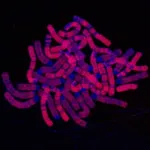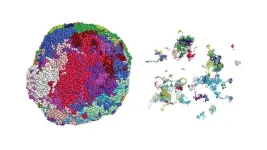December 20, 2023-- Several key public health occupations are lacking a Standard Occupational Classification code (SOC), including disease intervention specialist, public health nurse, policy analyst, and program manager, and without valid SOC matches and detailed data on local and state government health departments, the U.S. Department of Labor’s data cannot be used to count the number of public health workers serving as our nation’s frontline biodefense. Without that basic information, our nation will be challenged to know just how short-staffed our public health departments truly are.
Until now there was little evidence-based mapping between SOC codes and public health titles, and occupations and codes did not match well with several public health occupations, creating challenges in researching the workforce. The findings are published in the American Journal of Public Health.
The local, state, and Tribal government public health workforce is the backbone of the U.S. public health infrastructure, providing services crucial to health, safety, and national biosecurity. The workforce serves as frontline responders to public health emergencies, ensures clean water and air, controls infectious disease outbreaks, prevents chronic disease and injury, and maintains vital statistics such as birth and death certificates.
“We note the critical importance of having basic headcount data to know whether the workforce can provide needed services,” said Heather Krasna, PhD, EdM, MS, associate dean at Columbia University Mailman School of Public Health. “Building and maintaining this workforce is an essential public health service and critical for providing foundational public health services. Without basic information on how many individuals are in this workforce, what they do, how much they get paid, and what training they have, researchers, policymakers, and the public cannot determine whether there are workforce or funding shortages.”
Using the National Institute for Occupational Safety and Health Industry and Occupation Computerized Coding, System (NIOCCS), the researchers sought to determine which public health job titles clearly match to a SOC code and where there are gaps between SOC codes and public health occupations.
Krasna and colleagues reviewed past attempts at SOC matching for public health occupations and then matched the actual job titles for 26,516 respondents to the 2021 Public Health Workforce Interests and Needs Survey (PH WINS) with SOC codes, grouped by respondents’ choice of job category in PH WINS. They further assessed the accuracy of the NIOCCS matches and excluded those with insufficient information and or excessive inconsistency of SOC matches per PH WINS job category. Krasna and team manually also assessed the validity of the NIOCCS matches for the 200 most common civil service job titles, coding the matches as correct or incorrect.
“From our analyses, it is clear that although certain public health occupations have a classification match, many important public health occupations do not. In fact, as far back as 1997, a report, ‘The Public Health Workforce: An Agenda for the 21st Century,’ recommended the development of a standard taxonomy to characterize the public health workforce, specifically one linked to SOC codes. However, it has been noted repeatedly that this standardization did not come about.”
“In addition, our data review allowed us to identify which occupations within health departments were well matched to SOCs, and which were poorly matched. The key role of disease intervention specialist, in particular, had insufficient information as the most frequent match result.”
The authors note that an important, related challenge to public health workforce research is the lack of specificity in North American Industry Classification System (NAICS) codes. The data from the U.S. Department of Labor does not list occupational information for local or state health departments, instead using the broad category of “local government” and “state government.” This is especially problematic for public health leadership and program management roles, most of which match vague “manager” SOC codes, but lack accuracy for public health–specific SOC codes. Without this accuracy, occupational and salary information by NAICS industry for many detailed industries will continue to be lacking.
“With the deficiencies we have outlined in the research, the U.S. Department of Labor does not have the data to enumerate the entire public health workforce, leaving the crucial task of public health workforce enumeration primarily to professional associations or philanthropically funded efforts,” observes Krasna.
She continues, “without clear SOC codes, the public health workforce—the backbone of our nation’s biodefense—will lack data on workforce shortages and recruitment challenges, and our nation—and our nation’s public health systems—will be less healthy as a result.”
Co-authors are Malvika Venkataraman, Moriah Robins, and Isabella Patino, Columbia Mailman School of Public Health; and Jonathon Leider, University of Minnesota.
The study was supported by the Centers for Disease Control and Prevention and the Health Resources and Services Administration (awards U81HP47167 and UR2HP47371). The de Beaumont Foundation and the Association of State and Territorial Health Officials developed PH WINS to understand the interests and needs of the state and local governmental public health workforce in the United States. PH WINS was fielded in 2014, 2017, and 2021. For more information, visit phwins.org.
Columbia University Mailman School of Public Health
Founded in 1922, the Columbia University Mailman School of Public Health pursues an agenda of research, education, and service to address the critical and complex public health issues affecting New Yorkers, the nation and the world. The Columbia Mailman School is the fourth largest recipient of NIH grants among schools of public health. Its nearly 300 multi-disciplinary faculty members work in more than 100 countries around the world, addressing such issues as preventing infectious and chronic diseases, environmental health, maternal and child health, health policy, climate change and health, and public health preparedness. It is a leader in public health education with more than 1,300 graduate students from 55 nations pursuing a variety of master’s and doctoral degree programs. The Columbia Mailman School is also home to numerous world-renowned research centers, including ICAP and the Center for Infection and Immunity. For more information, please visit www.mailman.columbia.edu.
END





